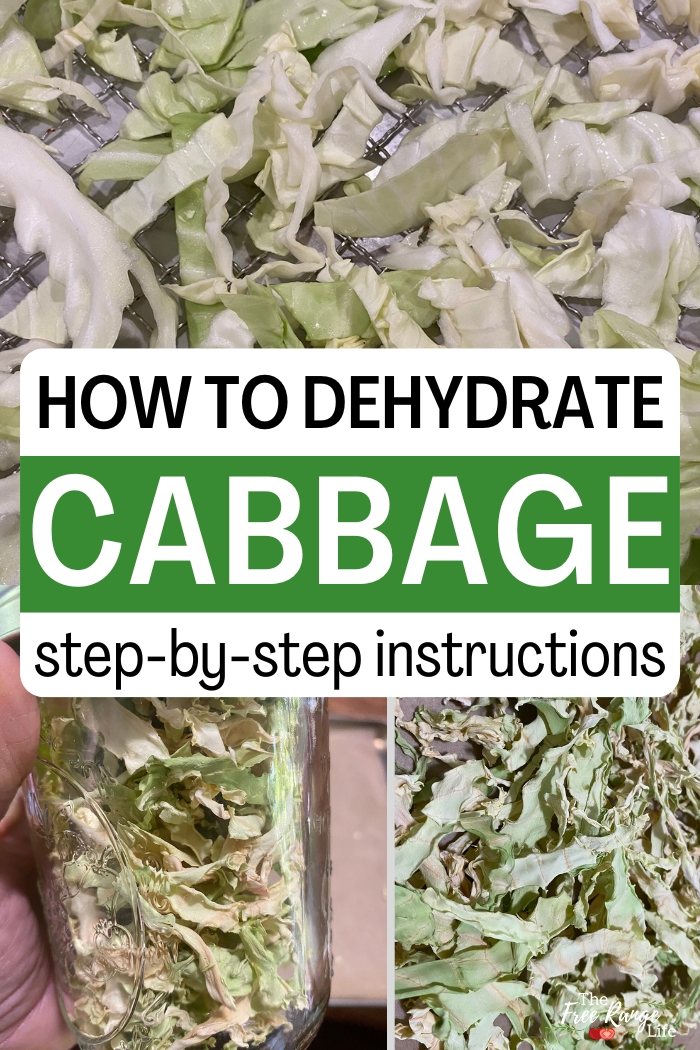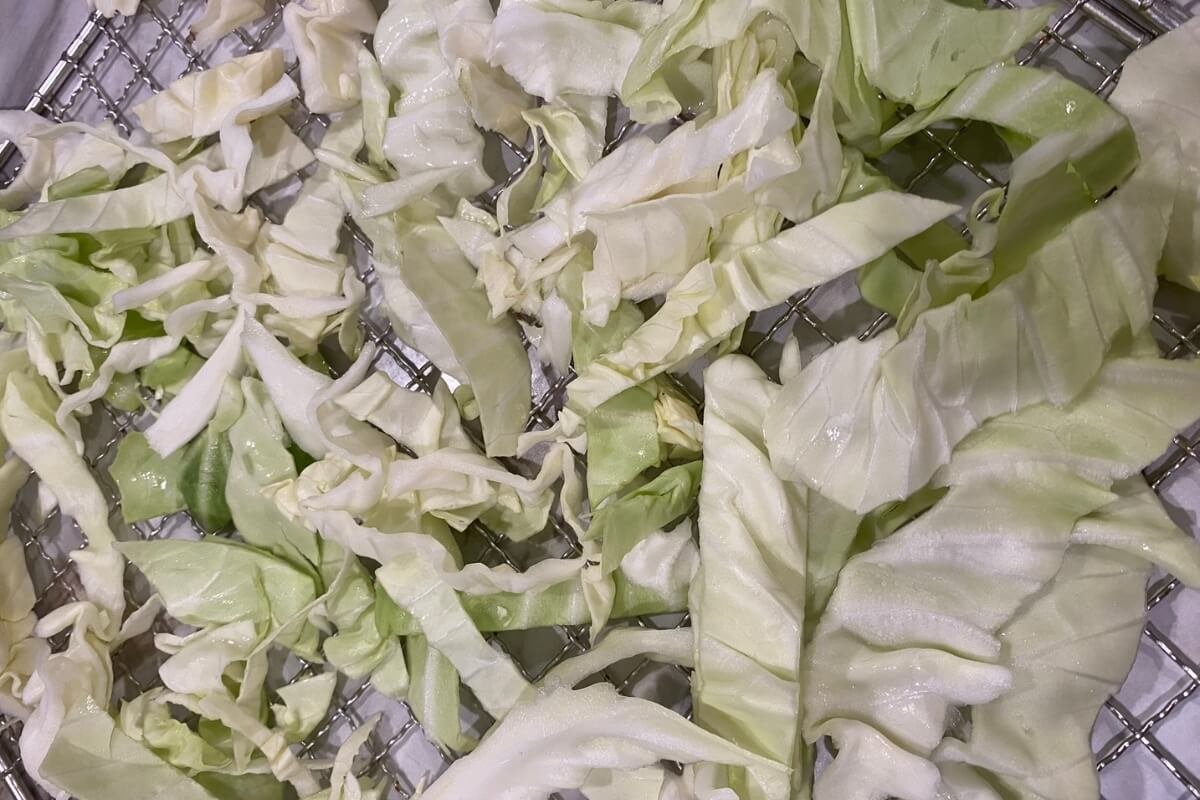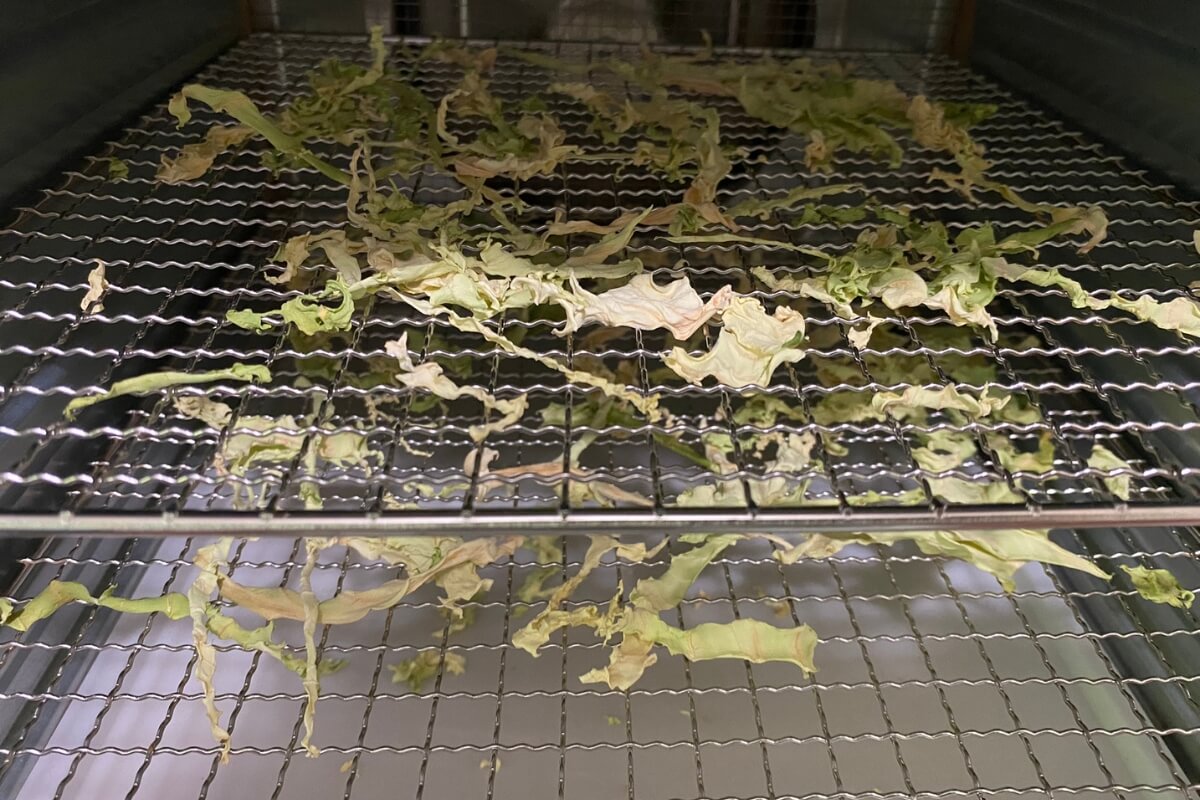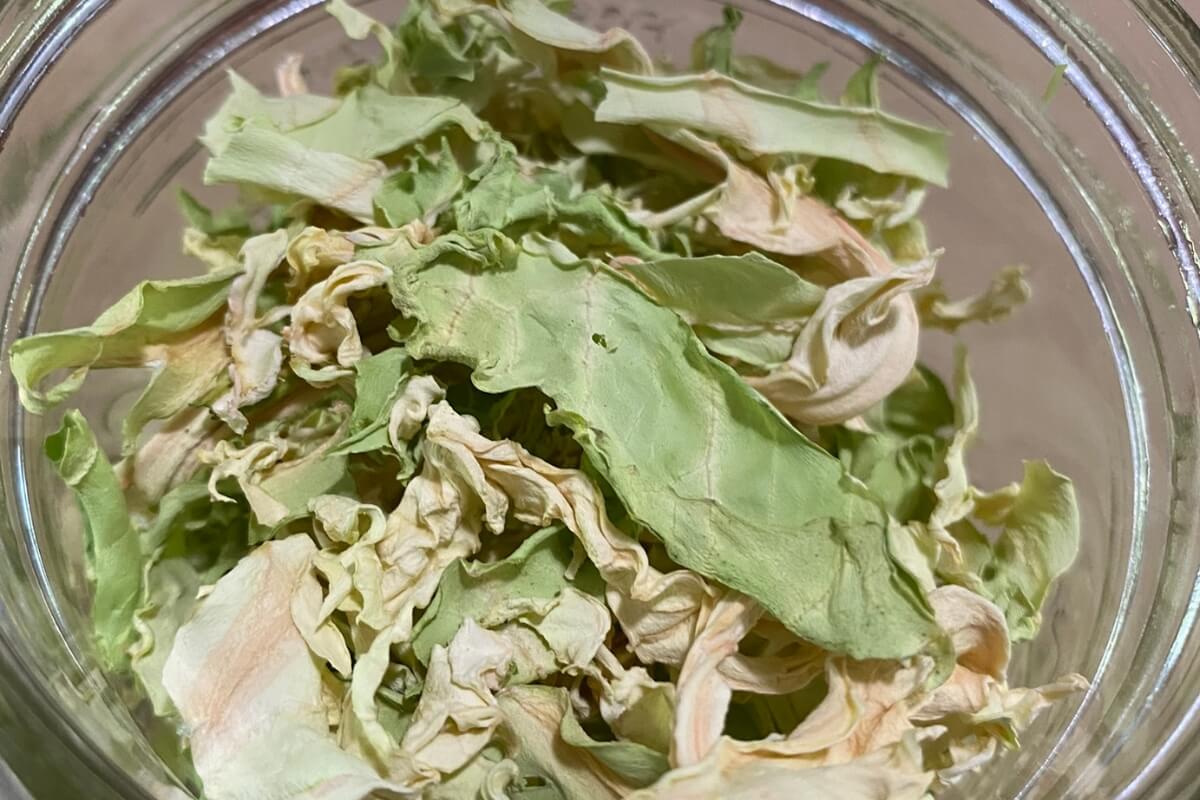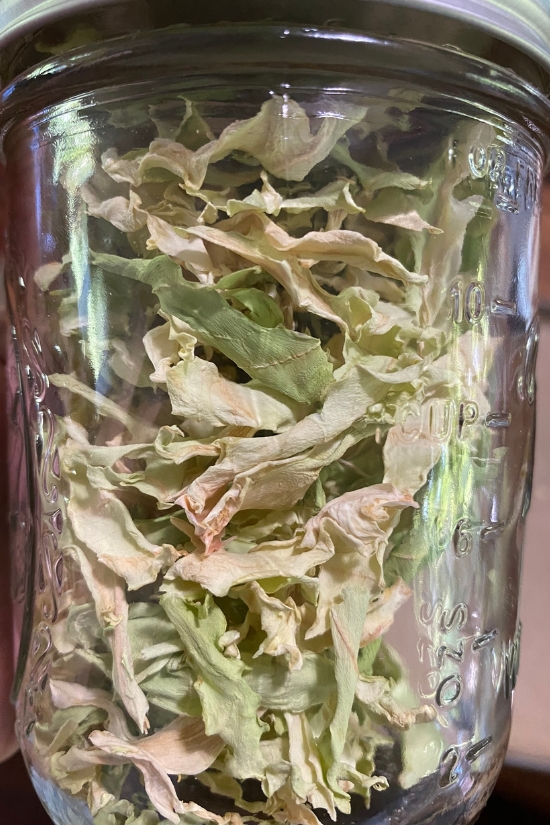Cabbage is an easy vegetable to dehydrate because it needs almost no prep work and dries very quickly. Get step by step instructions for dehydrating cabbage at home, so it doesn’t go to waste!
Cabbage is not only delicious but also highly nutritious. It’s full of vitamin C, vitamin K, vitamin B6, folate, and vitamin A.
This site contains affiliate links. If you make a purchase using one of these links, I may earn a commission. Please see my disclosure page for more information about cookies collected and our privacy policy.
To add even more benefits, it’s easy to grow and preserve! So whether you have lots of cabbage you need to save or you just don’t want your store-bought cabbage to go to waste, learning how to dehydrate cabbage at home is invaluable.
Another bonus for dehydrated cabbage – it makes it super easy to hide this nutritious vegetable in other dishes like soups, rice, sauces, dressings, eggs and more!
There are 3 different ways you can dehydrate cabbage at home, so let’s start with my favorite!
(Haven’t ever grown your own cabbage ? Here’s how: How to Grow Cabbage from Seed. It’s super easy!)
Dehydrating Cabbage in an Electric Dehydrator
An electric dehydrator is my preferred way of dehydrating cabbage, and here’s why:
- It keeps the cabbage at a controlled temperature, that’s not too high and won’t cook the nutrients out of your cabbage.
- It’s quick! You can dry cabbage in less than 6 hours (that’s short for drying times!)
- There’s no chance of burning the cabbage.
To dehydrate cabbage, start by slicing or chopping your cabbage into a desired size. I like to slice mine in about 1/2 to 1/2 inch slices.
Toss the cabbage pieces in a colander and wash well. I’ll sometimes skip this step since my cabbage comes fresh from my organic garden, but if worms or slugs are an issue in your garden, you definitely want to wash the cabbage before dehydrating.
Then dry the cabbage pieces well. A salad spinner really helps get it really dry.
Lay the cabbage pieces on your dehydrator trays in a single layer. Since cabbage has a high water content and the pieces shrink considerably, there can be some overlap of the pieces.
Set the temperature for 125-130 degrees Fahrenheit.
The cabbage should take 4-7 hours to dry completely, depending on the humidity and conditions in your home and how thick your pieces are.
Make sure the cabbage is 100% completely dry before storing to prevent molding and spoilage. Once the cabbage is completely dry, turn off the dehydrator and allow the cabbage to cool to room temperature before storing.
Don’t have a dehydrator? Check out the 11 Best Electric Dehydrators to help you choose one.
*Note: Some people like to blanch cabbage before drying. I find this step unnecessary, but if you choose to do it. Place your cabbage pieces in boiling water for 1.5 minutes and then immediately transfer to an ice bath to cool. Then dry as indicated.
How to Dehydrate Cabbage in Your Oven
If you don’t have a dehydrator, you can use your oven to dehydrate cabbage.
The key to dehydrating cabbage in the oven is to use the lowest temperature possible (or 125-130 degrees Fahrenheit, if yours goes that low). My oven goes to 145 at the lowest if I use the warming function.
If your oven doesn’t go below 200 degrees, you might want to leave the door open a crack to prevent the cabbage from getting too hot and burning.
Place the clean sliced cabbage on parchment paper lined baking trays in a single layer. Cook in an oven, set on the lowest heat setting, until dry and crispy. You may need to turn the trays and flip the leaves a couple of times to get an even dry.
Allow to cool completely before storing.
How to Air/Sun Dry Cabbage
You can also air dry or use a solar dehydrator to dry cabbage. This way will take much longer, but it is also free and doesn’t require any special equipment.
This isn’t my favorite way of dehydrating since I live in a humid location and things tend to mold before they dry. Cabbage has a lot of water content, so air drying isn’t the best option and I highly recommend investing in an electric dehydrator.
If you do try to air dry- using the sun is the best option.
Lay the prepared cabbage pieces on screens or trays in a single layer. If you can place them on cooling racks so that they get more air flow, even better! Place them in a location that is warm and sunny.
It might take a few days (or more) for your cabbage to dry completely, depending on the humidity in your aream, how much sun there is, and how warm the temperature is.
If bugs or contaminants are an issue, cover the trays with cheese cloth. You can also get a hanging, mesh solar dehydrator, to prevent pests or dust from contaminating your cabbage while it dries.
Again, be sure your cabbage is 100% dry before storing.
How to Store Dry Cabbage
Once your cabbage is completely dry, place it in an air tight, glass container. I prefer mason jars with metal rings/lids since they are air tight and don’t let in any moisture.
You can also vacuum seal in plastic bags.
Store the jar in a cool, dry location that’s not in direct sunlight for maximum shelf life. It should last at least a year if prepared properly.
How to Rehydrate Dehydrated Cabbage
Cabbage rehydrates easily. To rehydrate your dried cabbage, you can do one of 2 things:
First, use the liquid in your recipe to rehydrate as it cooks. This is perfect for soups and stews.
Second, you can place the dried cabbage in a bowl and cover with water and sit until the cabbage is rehydrated.
How to Use Dried Cabbage
Now that you have lots of dried cabbage, what should you do with it??
Here are some of my favorite ways to use dried cabbage:
- Toss it in your soups or stews
- Make stir-fries with it (rehydrate it first, or not)
- Use it as a crunchy snack- toss it with some salt or spices first if you wish
- Use it as a topping for meals like tacos
- Add a bit to your scrambled eggs or omelet
- Make coleslaw with it.
Dried cabbage retains much of its original nutrients since it hasn’t been blanched or cooked before drying. You can feel good about saving money by dehydrating it at home and not letting it go to waste!
Don’t want to dehydrate your cabbage? Try one of these other 10 Ways to Preserve Cabbage!
You may also like:
How to Make Cucumber Chips in the Dehydrator

